Service Alert
July 1 - Canada Day
CELA will be closed on Tuesday, July 1st for Canada Day. Our office will reopen and our Contact Centre services will resume on Wednesday, July 2nd. Enjoy your holiday!
CELA will be closed on Tuesday, July 1st for Canada Day. Our office will reopen and our Contact Centre services will resume on Wednesday, July 2nd. Enjoy your holiday!
Showing 1 - 20 of 12251 items
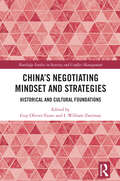
By I. William Zartman, Guy Olivier Faure. 2025
This book analyzes the mindset with which China enters into negotiations, and applies these insights into contemporary arenas of Chinese…
activity around the world.The volume presents and analyses the historical and cultural foundations of Chinese thinking as used in the practice of present-day negotiation. It begins by addressing the essence of Chinese negotiations and the Chinese mindset, turning to a section that presents the cultural foundations of that mindset and strategy. The concepts of Confucianism, Taoism, Yin-Yang, and Chinese military strategy are highlighted. The cases of the Belt-and-Road Initiative and the South and East China Seas are examined to show the application of these concepts, with one addressing business and economic negotiations and the other examining cases of negotiation in geopolitics. Finally, a synthesis of what has been learned is presented, which will contribute to negotiation theory and ultimately will help Western practitioners contemplating negotiation with Chinese diplomats and businesses, as well as being a basis for policy analysts’ understanding of Chinese practices in international relations.This book will be of much interest to students of international negotiation, foreign policy, business studies, and international relations, as well as practitioners and policymakers.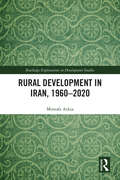
By Mostafa Azkia. 2025
This book is an authoritative account of rural development in Iran, spanning 60 years and 2 distinct political regimes.Professor Mostafa…
Azkia has spent many decades demonstrating the importance of participatory rural development, not only in addressing rural problems but also in reducing urban concerns, such as unemployment and overpopulation. This book is the culmination of this work, bringing together a detailed analysis of the theories, history, and strategies of rural and state development in Iran both before and after the Islamic Revolution. Putting rural communities at the fore, the book demonstrates that there has been significant progress in reducing the rural– urban gap, both in terms of income and standards of living, resulting in a more equal path of socioeconomic development for Iran.This comprehensive assessment from Iran’s foremost rural sociologist will be an important read for researchers and professionals working on rural development and sociology in the Middle East.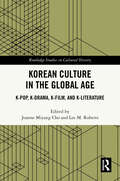
By Joanne Miyang Cho, Lee M. Roberts. 2025
Since the late 1990s, South Korean cultural products such as pop music, TV drama, and film have shaped the country’s…
image around the world. This book explores these three internationally best-known media of the Korean Wave global phenomenon, along with a less commonly featured aspect, K-literature.Iconic images of South Korea today include stylish music groups like BTS and Blackpink, appealing dramas, and a range of films and digital comics (manhwa). Alongside associations with glitz and glamor are darker impressions: continuing political division, malaise over a war that never really ended. Korean Culture in the Global Age focuses on these and other facets of South Korea’s constantly changing international image to show how it has come to command worldwide attention. In recent years, readers in a growing number of languages have discovered the talent of South Korean authors through the efforts of countless translators. Showing developments in and occasional connections between themes in K-pop, K-drama, K-film, and K-literature, the book provides a more comprehensive view of contemporary South Korean culture.This volume will interest researchers and students of Korean Studies, Asian Studies, Asian American Studies, popular music, film studies, migration and diaspora studies, and world literature.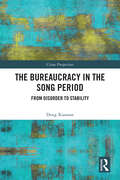
By Deng Xiaonan. 2025
The bureaucracy has always played a crucial role in the exercise of political power, and how officials are appointed is…
directly related to the effectiveness of state governance. This book conducts a clear and structured study of the complex personnel management system in imperial China.It examines the main features of the official appointment system in the Song dynasty (960–1279), such as the separation of official ranks and their duties, the agencies and regulations for appointing officials, the merit rating system, the coexistence of 'seniority' and 'functional rank' in the recruitment and selection of officials, and other important procedures, including the recommendation system, the evaluation for reassignment system, and the system of appointments to commissions. Focusing on both the institutional regulations and their practical implementation and effectiveness, the book reveals many contradictions and coping mechanisms in the Song dynasty's personnel management system.This book will appeal to scholars and students of Song dynasty history, personnel administration, and civil service.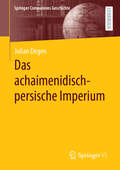
By Julian Degen. 2025
Diese Einführung bietet einen systematischen Überblick über die Geschichte des achaimenidisch-persischen Imperiums, das weithin auch als „Perserreich&“ bekannt ist. Dabei…
handelt es sich um die erste imperiale Formation der Antike, der es durch umfangreiche Eroberungen gelang, einen beeindruckenden Herrschaftsapparat zu errichten, der sich von Indien bis in nach Griechenland und von Äthiopien bis nach Zentralasien erstreckte. Dieses Imperium stellte die Bühne für zahlreiche schillernde Persönlichkeiten der Alten Welt dar, zu denen Kyros, Dareios, Xerxes, aber auch Alexander III. (der Große) zählen. Darüber hinaus setzte das Großreich Entwicklungen in Gang, die großen Einfluss auf die Welt Afro-Eurasiens ausübten und deren Dynamiken selbst in der Zeit nach seinem Niedergang bedeutsam waren. Insbesondere die Konflikte des Imperiums mit den Griechen fanden großen Nachhall in der antiken Geschichtsschreibung und ihre Präsentation stellt nach wie vor einen Orientierungspunkt des kollektiven Gedächtnisses moderner europäischer Gesellschaften dar. Aufgrund der enormen räumlichen Ausdehnung dieses Großreichs, das Herrschaft über eine Vielzahl an Kulturen ausübte, ist die Erforschung seiner Geschichte Gegenstand interdisziplinärer Forschungen. So sammelt diese Einführung Beiträge aus der Feder internationaler Spezialistinnen und Spezialisten aus unterschiedlichen Fachbereichen, die tiefgehende Einblicke in zahlreiche Aspekte der Geschichte des achaimenidisch-persischen Imperiums aus verschiedenen Perspektiven bieten.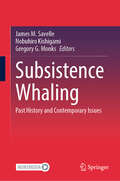
By Gregory G. Monks, Nobuhiro Kishigami, James M. Savelle. 2025
This book examines the past history, and contemporary status of subsistence whaling. The papers derive from a symposium ‘Aboriginal Whaling…
and Identity in the 21st Century’ held at the Eleventh Conference on Hunting and Gathering Societies in Vienna, Austria in September 2015. Whales, especially large baleen whales, are the largest animals targeted by many societies, prehistoric or modern, and major facets of subsistence, social structure and ideology are still deeply embedded in past and current whaling lifeways. Yet there is probably no other environmental/political issue that has attracted as much attention in the late 20th and early 21st century as whaling practices and policies. Accordingly, the papers address two major themes: 1) the extent and characteristics of major prehistoric and early historic whaling activities, and 2) case studies amongst modern whaling societies, and how these societies are impacted by current political and economic realities and by the anti-whaling movement.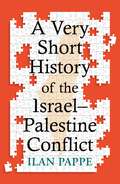
By Ilan Pappe. 2024
An indispensable guide to understanding the Israel–Palestine conflict, and how we might yet still find a way out of it.…
'Ilan Pappe is the most original, radical and hard-hitting of Israel&’s "new historians".' Avi Shlaim, author of Three Worlds The devastation of 7 October 2023 and the horrors that followed astounded the world. But the Israel–Palestine conflict didn&’t start on 7 October. It didn&’t start in 1967 either, when Israel occupied the West Bank, or in 1948 when the state of Israel was declared. It started in 1882, when the first Zionist settlers arrived in what was then Ottoman Palestine. Ilan Pappe untangles the history of two peoples, now sharing one land. Going back to the founding fathers of Zionism, Pappe expertly takes us through the twists and turns of international policy towards Israel–Palestine, Palestinian resistance to occupation, and the changes taking place in Israel itself.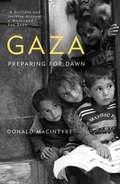
By Donald Macintyre. 2018
Uniquely imprisoned, most Palestinians in Gaza cannot travel beyond the confines of the Strip, and in times of war escape…
is impossible. They live under siege – economic and armed – and yet so many remain courageous, outspoken and steadfast. Donald Macintyre lays bare Gaza&’s human tragedy and reveals how it became a crucible of conflict and a byword for suffering. He identifies the repeated failings – including those of the international community – that have seen countless opportunities for peace pass by. Yet, against all odds, hope for a better future lingers. Gaza was once a flourishing coastal civilization open to the world. Could it be so again?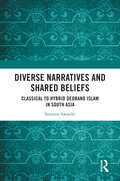
By Soumya Awasthi. 2026
This book delves into the intricate tapestry of Deoband Islam in India, Pakistan, and Afghanistan. Challenging simplistic narratives, it unveils…
the nuanced reality of Deoband Islam, revealing a diverse range of perspectives within the movement. It illuminates the movement's historical, social, and philosophical dimensions. It explores the movement's relationship with societal transformation and communal identity and its impact on the geopolitical dynamics of South Asia.The book offers a distinctive perspective on the Deoband school of thought in Islam by systematically categorising it into three distinct regional variants, each reflecting the unique socio-political context of its environment. The focus is on the Deoband school of thought, a strand within Sunni Islam that adheres to the philosophical framework of Ashari Maturidi. Critically examining its teachings uncovers the complexities and contradictions that shape Deobandi's thought, challenging popular assumptions and providing a fresh understanding. It also highlights the voices of Deobandi scholars and organisations who unequivocally denounce terrorism and actively work to counter radicalisation. Acknowledging their efforts, the book underscores the potential for dialogue and cooperation in promoting peace and understanding.With its comprehensive approach and thought-provoking analysis, this book is essential for scholars, policymakers, political science departments, theology, sociology, international relations, security studies, and South Asian studies.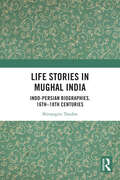
By Shivangini Tandon. 2025
Situated at the intersections between history and literature, the book explores the life-stories written in the Mughal period to recover…
socio-cultural developments in the period. It focuses on the genre of life-stories and looks at the complex interactions between agency and the ruling structure in shaping historical formations.The biographical dictionaries explored in this book highlight the significance of the agency of political actors, and the strategies through which the aristocrats and the elites reproduced the political system. At the same time, these texts are also quite helpful in recovering processes through which the ordinary people, in routine, everyday forms negotiated with and contested the political system. Delving into the life-narratives preserved in the tazkiras or biographical compendia, this book looks at the household as a political formation and positions the aristocratic households as integral to the reproduction of imperial sovereignty. The work also delves into the world of emotions and argues for the need to draw linkages between political developments and shifts in emotions and affect.This book will be an essential resource for scholars and researchers of history especially early modern history, cultural studies, literature, sociology, South Asian history. It will also be of interest to those studying gender and political discourse in early modern South Asia.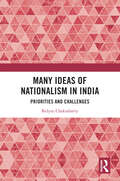
By Bidyut Chakrabarty. 2025
This book is a comprehensive analysis of the many visions of nationalism and nationalist leadership that emerged during India’s struggle…
for independence. The volume examines key nationalist thinkers such as Aurobindo, Gandhi, Tagore, Nazrul, Savarkar, and Ambedkar. It delineates different strands of nationalism in the post-moderate phase of nationalist movement and discusses political emancipation, social emancipation, and ethnic emancipation.Accessibly written for students with a helpful overview of how nationalist thought emerged in India, this book will be of great interest to students of South Asian history and politics. It will also be helpful for civil service aspirants.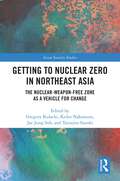
By Jae-Jung Suh, Keiko Nakamura, Gregory Kulacki, Tatsujiro Suzuki. 2025
This book presents realistic alternatives to security policies based on nuclear weapons for the Northeast Asian region.Northeast Asian governments and…
populations feel less secure than ever, and the governments of the USA, Russia, China, and North Korea are all expending considerable resources on increasing their nuclear arsenals. This book presents realistic alternatives to security policies dependent on threats to use nuclear weapons and demonstrations of the resolve to use them in a war. Those alternatives are grounded in the well-established concept of common security. The long-term goal of these alternatives is the establishment of a nuclear-weapon-free zone in Northeast Asia. This book demonstrates that lessons learned during the creation of existing nuclear-weapon-free zones can be successfully adapted, using the proposed alternatives to nuclear threats, to the considerably more challenging circumstances that exist in contemporary Northeast Asia. More importantly, it makes the case that the mere process of pursuing this objective, even if the goal is not realized for many decades, would help facilitate regional risk-reduction measures and global nuclear arms control measures that could lead, in the long term, to the general and complete disarmament promised by the Nuclear Nonproliferation Treaty (NPT) and the Treaty on the Prohibition of Nuclear Weapons (TPNW) of 2021. This book will be of interest to students of nuclear proliferation, Asian security, foreign policy, and International Relations.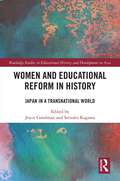
By Joyce Goodman, Setsuko Kagawa. 2025
This unique collection provides critical analyses of Japanese educational history by bringing together gender, transnational, and transcultural perspectives.It illustrates how…
Japanese, European, and American women educators transcended national borders in seeking to reform and re-shape Japanese education and society in the midst of social and political change from the Meiji era (1868-1912) to 1948 and beyond, including during the American Occupation of Japan. It demonstrates how educational practice from Europe and the United States not only flowed into Japan before and after the First and Second World Wars but also became entangled with Japanese perspectives, as well as with nationalism, colonialism, imperialism, and regionalism, as some Japanese educators sought to reform education for Asian women beyond Japan’s borders. In an increasingly connected world, where, at the same time, opportunities for women’s education in some countries are declining, the volume provides insights for readers into how women educators have co-operated historically across national borders in pursuit of reform in education and society in periods of immense social and political change, including at moments when nationalism and imperialism were in the ascendancy.This volume will be of interest to academics, researchers, and post graduate students in the fields of Japanese history, history of Japanese education, Japanese women’s history, gender perspectives, and transnational and transcultural research. It will also be of interest to readers curious about the history of Asia more broadly.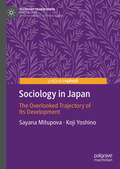
By Sayana Mitupova, Koji Yoshino. 2025
This Palgrave Pivot serves as a brief exploration of the evolution of sociological thinking in Japan from the Meiji era…
to the early 21st century. The authors unfold the narrative of societal changes, cultural shifts, and the interplay between tradition and modernity, tracing the footsteps of influential thinkers, movements, and key sociological themes that have shaped the collective consciousness of Japan. This book invites scholars and students alike to engage with the intricate fabric of Japanese society through a sociological lens.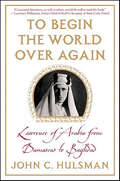
By John C. Hulsman. 2009
The little known history of Lawrence of Arabia's passionate and tragic advocacy of Arab nationalism during the pivotal years following…
WWI and his template for nation building in the Middle East.Lawrence of Arabia is best remembered for the Oscar-winning film about his life. But there is a different T.E. Lawrence, a man who applied his unique experiences and extensive knowledge of the Arab world to a political vision for nation building in the Middle East that holds many lessons for today. Following the Arab Revolt, Lawrence embarked on a heroic effort, harnessing his celebrity to force the British to keep the promises made to their Arab allies. Alas, he was unable to stop the Western powers from carving up the Middle East at Versailles, thus laying the foundations for the ongoing instability in that region. Still, until the day he died, Lawrence continued to fight for Arab nationalism, famously saying: "Better to let them do it imperfectly than do it perfectly yourself, for it is their country, their war, and your time is short." By weaving together a gripping narrative of Lawrence's Middle East adventures and highlighting his surprisingly astute political thinking, John Hulsman teases out this and many other lessons to be learned from Lawrence about the Arab world.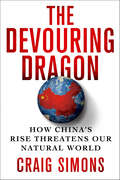
By Craig Simons. 2013
China's rise is assaulting the natural world at an alarming rate. In a few short years, China has become the…
planet's largest market for endangered wildlife, its top importer of tropical trees, and its biggest emitter of greenhouse gases. Its rapid economic growth has driven up the world's very metabolism: in Brazil, farmers clear large swaths of the Amazon to plant soybeans; Indian poachers hunt tigers and elephants to feed Chinese demand; in the United States, clouds of mercury and ozone drift earthward after trans-Pacific jet-stream journeys. Craig Simons' The Devouring Dragon looks at how an ascending China has rapidly surpassed the U.S. and Europe as the planet's worst-polluting superpower. It argues that China's most important 21st-century legacy will be determined not by jobs, corporate profits, or political alliances, but by how quickly its growth degrades the global environment and whether it can stem the damage. Combining in-depth reporting with wide-ranging interviews and scientific research, The Devouring Dragon shines a spotlight on how China has put our planet's forests, wildlife, oceans, and climate in jeopardy, multiplying the risks for everyone in our burgeoning, increasingly busy world.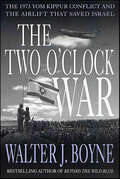
By Walter J. Boyne. 2002
Walter J. Boyne's The Two O'Clock War is a spellbinding chronicle of the international chess game that was played out…
in October 1973. It is a story of diplomacy and military might that accounts for many of the dilemmas faced in the present-day Middle East. It's usually called the Yom Kippur War. Or sometimes the October War. The players that surround it are familiar: Sadat and Mubarak, Meir and Sharon, Nixon and Kissinger, Brezhnev and Dobyrnin. It was a war that brought Arab and Jew into vicious conflict. A war in which Israel almost unleashed her nuclear arsenal and set two superpowers on a treacherous course of nuclear escalation. And a war that eventually brought peace. But a peace fraught with delicate tensions, disputed borders, and a legacy of further bloodshed.This is a war that Israel never thought was possible. Surprised by the fury and excellent execution of the Arab onslaught, and perhaps more than a little complacent, Israel suddenly found itself on the point of losing a war because of a lack of ammunition, planes and tanks. The United States, after much vacillation, finally elected to help Israel, beginning a tremendous airlift (code name: Operation Nickel Grass) which incurred the wrath of the Arab states, and their sponsor, the Soviet Union. Fortunately, the airlift came just in time for Israeli ground forces to stabilize their positions and eventually turn the tide in the Sinai and Golan Heights. And it was all made possible by an operation that dwarfed the Berlin Airlift and the Soviets' simultaneous efforts in Egypt and Syria.The Two O'Clock War is bound to become the definitive history of a war that quite literally approached Armageddon.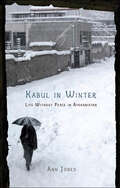
By Ann Jones. 2006
A sharp and arresting people's-eye view of real life in Afghanistan after the Taliban Soon after the bombing of Kabul…
ceased, award-winning journalist and women's rights activist Ann Jones set out for the shattered city, determined to bring help where her country had brought destruction. Here is her trenchant report from inside a city struggling to rise from the ruins. Working among the multitude of impoverished war widows, retraining Kabul's long-silenced English teachers, and investigating the city's prison for women, Jones enters a large community of female outcasts: runaway child brides, pariah prostitutes, cast-off wives, victims of rape. In the streets and markets, she hears the Afghan view of the supposed benefits brought by the fall of the Taliban, and learns that regarding women as less than human is the norm, not the aberration of one conspicuously repressive regime. Jones confronts the ways in which Afghan education, culture, and politics have repeatedly been hijacked—by Communists, Islamic fundamentalists, and the Western free marketeers—always with disastrous results. And she reveals, through small events, the big disjunctions: between U.S promises and performance, between the new "democracy" and the still-entrenched warlords, between what's boasted of and what is. At once angry, profound, and starkly beautiful, Kabul in Winter brings alive the people and day-to-day life of a place whose future depends so much upon our own.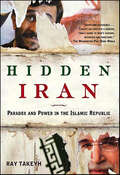
By Ray Takeyh. 2006
A leading expert explains why we fail to understand Iran and offers a new strategy for redefining this crucial relationshipFor…
more than a quarter of a century, few countries have been as resistant to American influence or understanding as Iran. The United States and Iran have long eyed each other with suspicion, all too eager to jump to conclusions and slam the door. What gets lost along the way is a sense of what is actually happening inside Iran and why it matters. With a new hard-line Iranian president making incendiary pronouncements and pressing for nuclear developments, the consequences of not understanding Iran have never been higher.Ray Takeyh, a leading expert on Iran's politics and history, has written a groundbreaking book that demystifies the Iranian regime and shows how the fault lines of Iran's domestic politics serve to explain its behavior. In Hidden Iran, he explains why this country has so often confounded American expectations and why its outward hostility does not necessarily preclude the normalization of relations. Through a clearer understanding of the competing claims of Muslim theology, republican pragmatism, and factional competition, he offers a new paradigm for managing our relations with this rising power.
By Robert F. Worth. 2016
The definitive work of literary journalism on the Arab Spring and its troubled aftermathIn 2011, a wave of revolution spread…
through the Middle East as protesters demanded an end to tyranny, corruption, and economic decay. From Egypt to Yemen, a generation of young Arabs insisted on a new ethos of common citizenship. Five years later, their utopian aspirations have taken on a darker cast as old divides reemerge and deepen. In one country after another, brutal terrorists and dictators have risen to the top. A Rage for Order is the first work of literary journalism to track the tormented legacy of what was once called the Arab Spring. In the style of V. S. Naipaul and Lawrence Wright, the distinguished New York Times correspondent Robert F. Worth brings the history of the present to life through vivid stories and portraits. We meet a Libyan rebel who must decide whether to kill the Qaddafi-regime torturer who murdered his brother; a Yemeni farmer who lives in servitude to a poetry-writing, dungeon-operating chieftain; and an Egyptian doctor who is caught between his loyalty to the Muslim Brotherhood and his hopes for a new, tolerant democracy. Combining dramatic storytelling with an original analysis of the Arab world today, A Rage for Order captures the psychic and actual civil wars raging throughout the Middle East, and explains how the dream of an Arab renaissance gave way to a new age of discord.